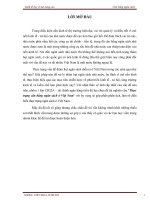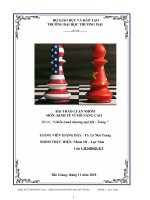Bài giảng Kinh tế vĩ mô nâng cao: Chapter 19 - TS. Phan Thế Công
Bạn đang xem bản rút gọn của tài liệu. Xem và tải ngay bản đầy đủ của tài liệu tại đây (202.13 KB, 8 trang )
��������������������������������������������������������������������������������������������������������������������������������������������������������������������������������������������������������������������������������������������������������������������������������������������������������������������������������������������������������������������������������������������������������������������������������������������������������������������������������������������������������������������������������������������������������������������������������������������������������������������������������������������������������������������������������������������������������������������������������������������������������������������������������������������������������������������������������������������������������������������������������������������������������������������������������������������������������������������������������������������������������������������������������������������������������������������������������������������������������������������������������������������������������������������������������������������������������������������������������������������������������������������������������������������������������������������������������������������������������������������������������������������������������������������������������������������������������������������������������������������������������������������������������������������������������������������������������������������������������������������������������������������������������������������������������������������������������������������������������������������������������������������������������������������������������������������������������������������������������������������������������������������������������������������������������������������������������������������������������������������������������������������������������������������������������������������������������������������������������������������������������������������������������������������������������������������������������������������������������������������������������������������������������������������������������������������������������������������������������������������������������������������������������������������������������������������������������������������������������������������������������������������������������������������������������������������������������������������������������������������������������������������������������������������������������������������������������������������������������������������������������������������������������������������������������������������������������������������������������������������������������������������������������������������������������������������������������������������������������������������������������������������������������������������������������������������������������������������������������������������������������������������������������������������������������������������������������������������������������������������������������������������������������������������������������������������������������������������������������������������������������������������������������������������������������������������������������������������������������������������������������������������������������������������������������������������������������������������������������������������������������������������������������������������������������������������������������������������������������������������������������������������������������������������������������������������������������������������������������������������������������������������������������������������������������������������������������������������������������������������������������������������������������������������������������������������������������������������������������������������������������������������������������������������������������������������������������������������������������������������������������������������������������������������������������������������������������������������������������������������������������������������������������������������������������������������������������������������������������������������������������������������������������������������������������������������������������������������������������������������������������������������������������������������������������������������������������������������������������������������������������������������������������������������������������������������������������������������������������������������������������������������������������������������������������������������������������������������������������������������������������������������������������������������������������������������������������������������������������������������������������������������������������������������������������������������������������������������������������������������������������������������������������������������������������������������������������������������������������������������������������������������������������������������������������������������������������������������������������������������������������������������������������������������������������������������������������������������������������������������������������������������������������������������������������������������������������������������������������������������������������������������������������������������������������������������������������������������������������������������������������������������������������������������������������������������������������������������������������������������������������������������������������������������������������������������������������������������������������������������������������������������������������������������������������������������������������������������������������������������������������������������������������������������������������������������������������������������������������������������������������������������������������������������������������������������������������������������������������������������������������������������������������������������������������������������������������������������������������������������������������������������������������������������������������������������������������������������������������������������������������������������������������������������������������������������������������������������������������������������������������������������������������������������������������������������������������������������������������������������������������������������������������������������������������������������������������������������������������������������������������������������������������������������������������������������������������������������������������������������������������������������������������������������������������������������������������������������������������������������������������������������������������������������������������������������������������������������������������������������������������������������������������������������������������������������������������������������������������������������������������������������������������������������������������������������������������������������������������������������������������������������������������������������������������������������������������������������������������������������������������������������������������������������������������������������������������������������������������������������������������������������������������������������������������������������������������������������������������������������������������������������������������������������������������������������������������������������������������������������������������������������������������������������������������������������������������������������������������������������������������������������������������������������������������������������������������������������������������������������������������������������������������oduct attributes, such
as quality, service, or delivery lags
4. Implicit contracts: firms tacitly agree to stabilize
prices, perhaps out of ‘fairness’ to customers
5. Explicit contracts that fix nominal prices
6. Menu costs
CHAPTER 19
Advances in Business Cycle Theory
slide 20
7
04/01/2016
CONCLUSION:
The frontiers of research
This chapter has explored two distinct
approaches to the study of business cycles:
- Real Business Cycle theory
- New Keynesian theory
Not all economists fall entirely into one camp
or the other.
An increasing amount of research incorporates
insights from both schools of thought to advance
our understanding of economic fluctuations.
CHAPTER 19
Advances in Business Cycle Theory
slide 21
Chapter Summary
1. Real Business Cycle Theory
assumes perfect flexibility of wages and prices
shows how fluctuations arise in response to
productivity shocks
suggests that the fluctuations are optimal given the
shocks
2. Points of controversy in RBC theory
intertemporal substitution of labor
the importance of technology shocks
the neutrality of money
the flexibility of prices and wages
CHAPTER 19
Advances in Business Cycle Theory
slide 22
Chapter Summary
3. New Keynesian Economics
accepts the traditional model of aggregate
demand and supply
attempts to explain the stickiness of wages and
prices with microeconomic analysis, including
menu costs
coordination failure
staggering of wages and prices
CHAPTER 19
Advances in Business Cycle Theory
slide 23
8









